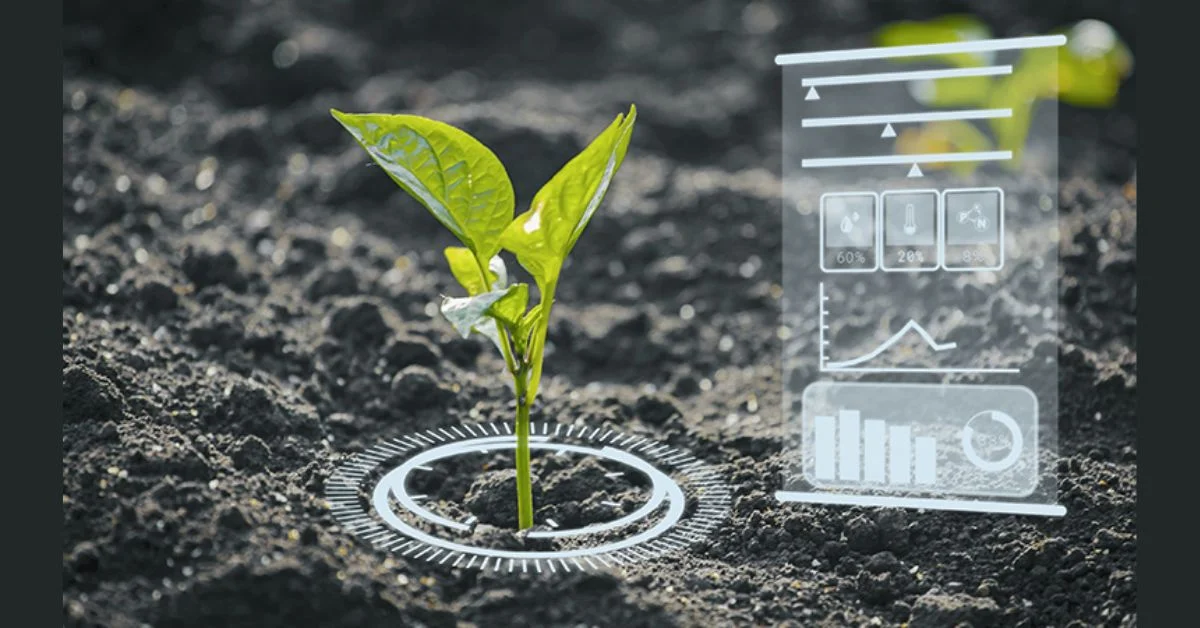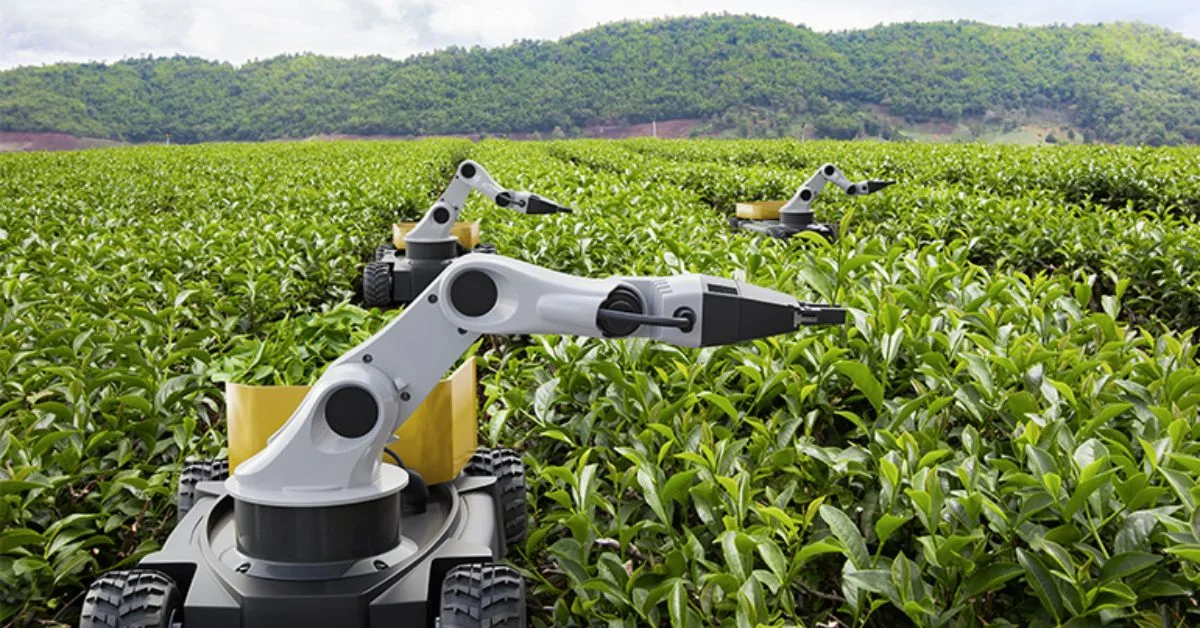Imagine verdant fields whispering with data, drones flitting like digital pollinators, and robots tending crops with the precision of an algorithm. This isn’t a sci-fi utopia, but the burgeoning reality of Artificial Intelligence (AI) transforming the ancient art of agriculture.
Forget backbreaking labor and unpredictable yields. AI is emerging as a farmhand of the future, armed with a digital scythe and a keen eye for optimization. Today, we’ll weave a narrative of technological empowerment, exploring how AI is:
- Seeding precision: Algorithms analyze soil composition, weather patterns, and crop health, crafting personalized growing plans that maximize yield and minimize waste. Think of it as fertilizer guided by a data-driven oracle.
- Watering with wisdom: Irrigation systems learn the thirst of your fields, delivering just the right amount of water at the precise moment, ensuring optimal growth while conserving precious resources. Say goodbye to parched droughts and wasteful floods.
- Guarding against unseen threats: AI scans fields like a vigilant hawk, detecting pests and diseases before they can wreak havoc. Predictive algorithms anticipate outbreaks, allowing farmers to proactively protect their crops, not just react to disaster.
- Harvesting a digital bounty: From robotic pickers with tireless arms to automated sorting and processing, AI streamlines the harvest, reducing labor costs, improving efficiency, and ensuring your bounty reaches the market fresh and perfect.
But this fertile field isn’t without its challenges. Ethical considerations, ensuring equitable access to technology, and the need for human oversight are crucial weeds to address. We’ll navigate these complexities with care, cultivating a future where AI complements, not replaces, human expertise, leaving the farmer firmly at the helm of this technological revolution.
So, join us on this journey as we till the soil of innovation. Witness the blossoming of AI-powered agriculture, savor the fruits of its bountiful harvests, and envision a future where technology nourishes not just crops, but the very spirit of human ingenuity.

Precision Farming:
AI’s role in agriculture begins with precision farming, a methodology that leverages technology to optimize crop yields while minimizing resources. Through the use of sensors, drones, and satellite imagery, AI-powered systems gather vast amounts of data on soil quality, moisture levels, and crop health. Machine learning algorithms analyze this data to provide farmers with insights that enable precise actions, such as targeted irrigation, optimal fertilizer use, and timely pest control.
Crop Monitoring and Management:
One of the significant challenges in agriculture is identifying and addressing crop diseases promptly. AI-based image recognition technology assists in early detection by analyzing images of plants captured by drones or cameras. These systems can detect subtle changes in color, texture, or size that may indicate the presence of disease, allowing farmers to take immediate corrective measures.
Predictive Analytics:
AI’s predictive capabilities empower farmers to anticipate challenges before they occur. By analyzing historical data, weather patterns, and soil conditions, AI algorithms generate forecasts for potential crop diseases, pest infestations, or adverse weather events. Armed with this information, farmers can proactively implement strategies to mitigate risks and safeguard their yields.
Autonomous Machinery:
The integration of AI in agriculture has led to the development of autonomous machinery. Self-driving tractors and harvesters equipped with AI technology can perform tasks such as planting, plowing, and harvesting with precision and efficiency. These machines not only reduce labor costs but also operate 24/7, optimizing productivity and allowing farmers to focus on more strategic aspects of farming.
Improving Livestock Management:
AI is not limited to crop cultivation; it’s also transforming livestock management. Sensors and wearable devices monitor the health and behavior of animals, collecting real-time data on factors like movement, feeding patterns, and vital signs. AI algorithms analyze this data to identify patterns indicative of illness or stress, enabling early intervention and better overall care for the animals.
Challenges and Adoption:
Despite its immense potential, widespread adoption of AI in agriculture faces some challenges. Access to advanced technology, high initial costs, and the need for specialized skills to interpret and apply AI-driven insights can be barriers for many farmers, especially in developing regions. Bridging these gaps and ensuring equitable access to AI-powered tools remains a priority.
Environmental Impact:
AI-driven precision farming holds promise in reducing the environmental impact of agriculture. By optimizing resource utilization, minimizing chemical usage, and reducing food waste through targeted interventions, AI contributes to sustainability efforts, conserving water, reducing greenhouse gas emissions, and preserving biodiversity.
Future Outlook:
The future of agriculture is intricately linked with AI advancements. Continued research and innovation will lead to more sophisticated AI applications, further enhancing productivity, sustainability, and resilience in farming practices. Collaborations between tech companies, agricultural experts, and policymakers will play a crucial role in fostering the adoption of AI in agriculture globally.

Conclusion:
Artificial Intelligence is fundamentally reshaping the agricultural landscape, empowering farmers with data-driven insights and advanced technologies to optimize productivity, improve resource efficiency, and ensure food security. As AI continues to evolve, its integration in agriculture will be pivotal in addressing the challenges of feeding a growing population while safeguarding the environment.
This post provides an overview of the ways AI is transforming agriculture, focusing on precision farming, predictive analytics, autonomous machinery, livestock management, challenges, environmental impact, and the future outlook.
